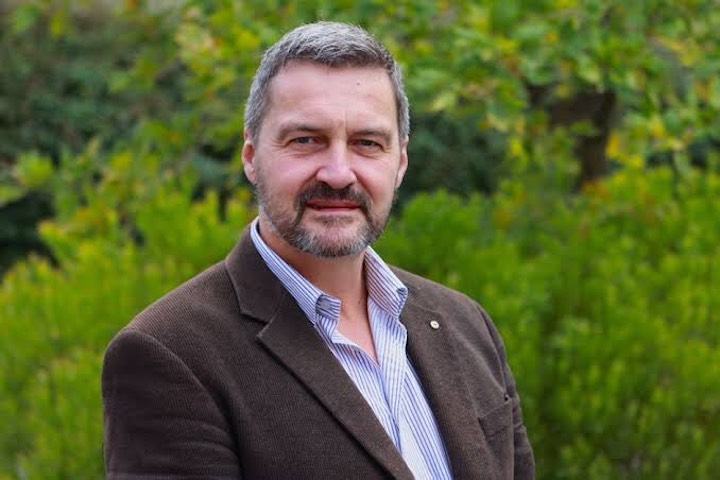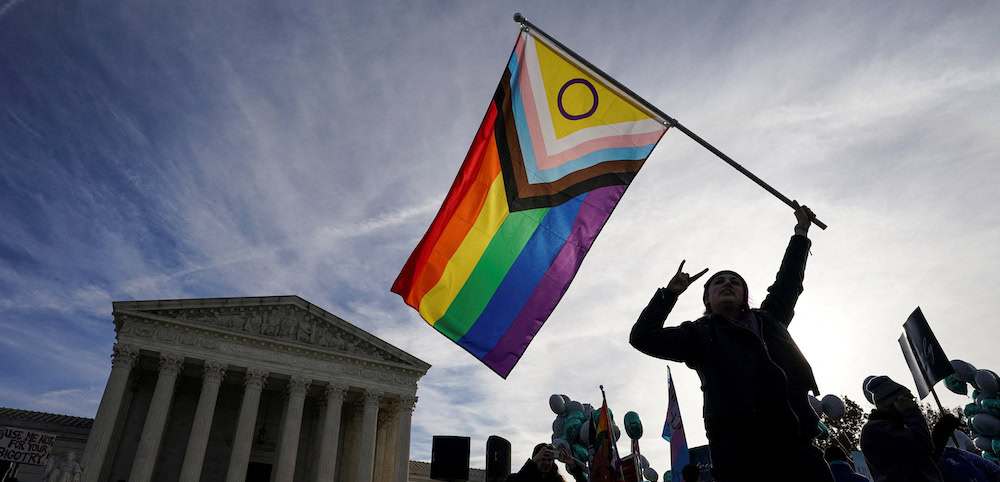
Registries offer choice
By Rodney Croome
The establishment of a relationship register in Victoria again focuses attention on Australia’s proliferating state and territory civil partnership schemes.
Tasmania and the ACT each have one, and Queensland is seriously thinking about it.
These registries serve the valuable function of allowing couples to access and guarantee relationship rights without jumping through the legal hoops associated with proving de facto status.
They also provide couples with symbolic affirmation from government and society.
But despite these benefits, our state registries often get bad press.
To those for whom marriage has traditionally been the only way to formalise relationships registries look bland or second-rate. Recently, Justice Michael Kirby derided them as equivalent to licensing
a dog or a busker.
What’s unfair about this comparison is that our state partnership registries were never intended as a substitute for same-sex marriage. They are designed as an alternative for couples who can’t or don’t wish to marry to formalise their unions.
When we remove them from the marriage debate we can begin to see their positive qualities.
The Tasmanian and Victorian schemes allow a much wider range of significant relationships to be recognised than was previously the case. This includes not just straight and gay couples, but non-sexual partners such as carers and the people they care for, and older companions.
The ACT scheme includes a range of official ceremonial options, designed to suit the partners involved. This includes no ceremony at all, if that’s what the couple wants.
The fundamental principle behind all these schemes is choice.
Partners should be able to choose for themselves which of their personal relationships deserves legal recognition. They should also be able to choose how they enter their new legal relationship, be it with solemn vows, or simply by signing a piece of paper.
Seen this way, Australia’s state partnership registries are not only fully-fledged civil partnership schemes, they are among the most advanced in the world.
Take the UK civil partnership scheme, to which ours are often unfavourably compared.
Under the UK scheme only same-sex partners can register. But same-sex couples who register do not have full marital rights like they do under most of Australia’s schemes.
Meanwhile, heterosexual couples who don’t wish to marry, and non-sexual couples who can’t marry, are left out completely.
Even when it comes to the vexed issue of ceremonies, the UK scheme is retrograde. It includes no option for an official ceremony, going so far as to prohibit DIY ceremonies in churches.
The proof that our schemes compare well is in the statistical pudding.
Proportional to population, the number of couples who have formalised their union under Tasmania’s scheme, the oldest in Australia, is the same as the number of couples registered under schemes in New Zealand and Britain.
Far from being second-rate, Australia’s state-based registries are at the global cutting edge.
When it comes to key questions such as what makes a personal relationship important enough to be legally recognised and how we should respect and entitle such relationships, our registries are expanding the legal and cultural horizon.
Same-sex marriage remains an important issue which must be addressed in its own right.
But we shouldn’t forget the progressive principles that underpin our state and territory registries and the many benefits bestowed by them.
Rodney Croome is a spokesman for the Tasmanian Gay and Lesbian Rights Group.










There is no need for Nathan Rees to create one for NSW, as the original 2003 City of Sydney scheme was expanded on 15th January 2005 to cover the WHOLE of NSW.
Any marriage celebrant or MCC Church Minister anywhere in NSW can contact the council on thier hotline & officiate in Dubbo if they want to, without ever having to physically go to Sydney- it can all be done by mail. After the ceremony (yes, the only scheme in Oz to actually have an official ceremony option… on site or off-site), the paperwork just has to be express posted back to Sydney within 7days to go onto the register.
Once the ceremony has been registered, and both the council and the couple have thier certificate, they can then easily access all the recent K-Rudd defacto recognition options, with the one standardised official form/certificate to easily prove thier status.
The other HUGE benefit of the Sydney/NSW existing scheme, is that the couple ALSO sign on the certificate on how long they have ALREADY been together- ie both sign to say for example “we have already been in relationship for four years” on the certificate. So the Sydney/NSW is fantastic for back-dating proof of how long the relationship has already been in existence.
So…. that’s why Nathan Rees hasn’t & won’t bother with a new scheme…. as how could he top that! With the ceremony restrictions imposed by K-Rudd on any new schemes, all that Rees would be allowed to do would be to introduce a similar duplicate scheme, but one that would BAN the existing ceremony component per Rudds wishes of no ceremonies.
So we are better off keeping Clover Moore’s 2005 model that slipped under the radar of both the Howard’s & Rudd’s war on ceremonies… us the ultimate “up yours”, where we can have our ceremony cake & eat it too… anywhere in NSW.
Come on Nathan Rees (ALP); provide a relationship register for ALL couple and carers! It is 2009; there is MASSIVE support for them (80 percent support actually). The Greens should introduce a Relationships Bill 2009 (based on the Tassie and Victorian model) in the next sitting of NSW Parliament!